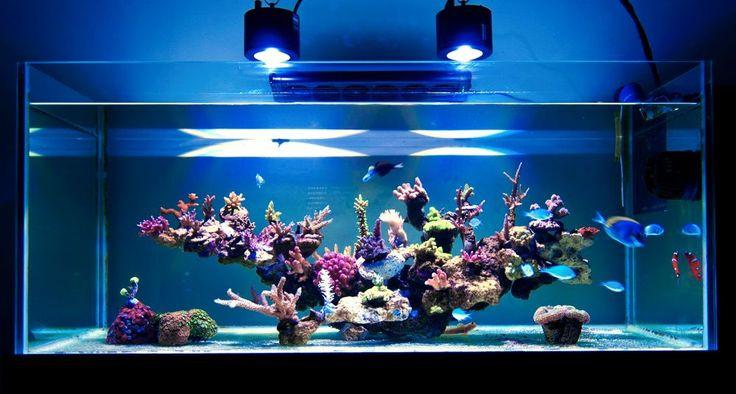Everyone who happens upon a location with a great aquarium set-up would surely be mesmerized by its colorful aquatic inhabitants. Its lighting effects and bluish glow seem to add and enhance the rich plethora of colors exhibited by different marine creatures and underwater structures.
Why Choose LED Lighting Systems for Aquariums?
Aquariums have become an aesthetic staple in the homes of several families. Aside from feng shui and traditional beliefs, it is a great addition to a household’s decors. Aquarists and hobbyists of the craft mostly enjoy the construction and assembly of live rock formations, installation of corals, reefs, beach sand, aquatic plants, and choice of fish species.
Passionate fish tank hobbyists keep their aquariums in excellent condition to ensure that the fish species are taken care of and all the marine installations that make up the habitat. They maintain their aquariums with quality oxygen reservoirs and water filtration systems. Another different system that people consider with an aquarium comes with its lighting fixtures.
The advancements of LED lighting systems are becoming a popular trend in the industry of aquarium building. An avid fan of marine containers may invest in great aquarium lighting that ensures the growth and development of young fish species and marine creatures. The day and night cycle that can be simulated by modern LED aquarium lights are beneficial for aquatic plants’ well-being and the micro-organisms that dwell with them.
LED lighting systems are efficient in providing the much-needed energy required by marine biological dynamics. It gives the environment the proper amount of light waves that are crucial for the manufacturing of nutrients and natural elements for marine life’s sustenance. LED lighting systems can also affect the propagation and growth of aquarium-based algae.

What are LED Lights?
LED is the general acronym that means Light Emitting Diode. These diodes are small in size and attached to a chip that regulates incoming power distribution converted to light energy. Light-emitting diodes produce light waves through a process called electroluminescence, which is the processing of positively charged subatomic particles through a microchip made of semi-conductive materials.
Benefits of Light Emitting Diodes
LED lighting systems are not just good for aquariums but perform beyond their expected function. Combined with advancements in digital technology and programming, the application of LEDs is flexible. They also offer several benefits for the marine life inside a fish tank and an aquarium hobbyist that installs them.
-
Energy Efficiency
The popularity of Emitting light diodes or LED lighting systems comes with its initial affordability and low-cost energy requirements. LEDs provide means to illuminate an aquatic setting without wasting too much electric energy. It is the energy-saving characteristics of Light Emitting Diodes that distinguishes them from conventional aquarium lighting systems.
-
Modular Settings
Advancements in chip technology, infrared technology, and digital platforms are now applied with aquarium equipment. For example, the modern Light Emitting Diode systems for aquariums can be remotely adjusted and controlled with a digital device. Their light wave intensity can also be increased or decreased based upon the needs of the aquatic creatures living inside a marine tank.
-
PAR (Photosynthetically Active Radiation)
The capability of having a Photosynthetically Active Radiation or PAR is one of the crucial features of modern LED aquarium lighting systems. Photosynthetically Active Radiation is only emitted by specialized LEDs built and designed for this purpose. LED systems capable of producing Photosynthetically Active Radiation can create an array of light waves within the light spectrum range, crucial for aquatic life forms relying on photosynthesis for their growth, sustenance, and well-being.
-
Illumination
LED lighting fixtures are known not to produce Ultraviolet lightwaves. Light Emitting Diodes are suitable attachments to programmable digital and electronic systems that manage the number of light waves they make. LEDs are versatile in emitting different arrays of light waves from the light spectrum order that gives them the capability to illuminate even the dark spaces of an aquarium.
Conclusion
LED is the internationally recognized acronym that stands for Light Emitting Diodes. Aquarium LEDs are popular for their energy efficiency, low-cost, compatibility with different aquarium sizes, and less energy than other fish tank lighting installations. LEDs are great for aquarium set-ups since they do not heat the water and do not lose intensity even after several years of function.
